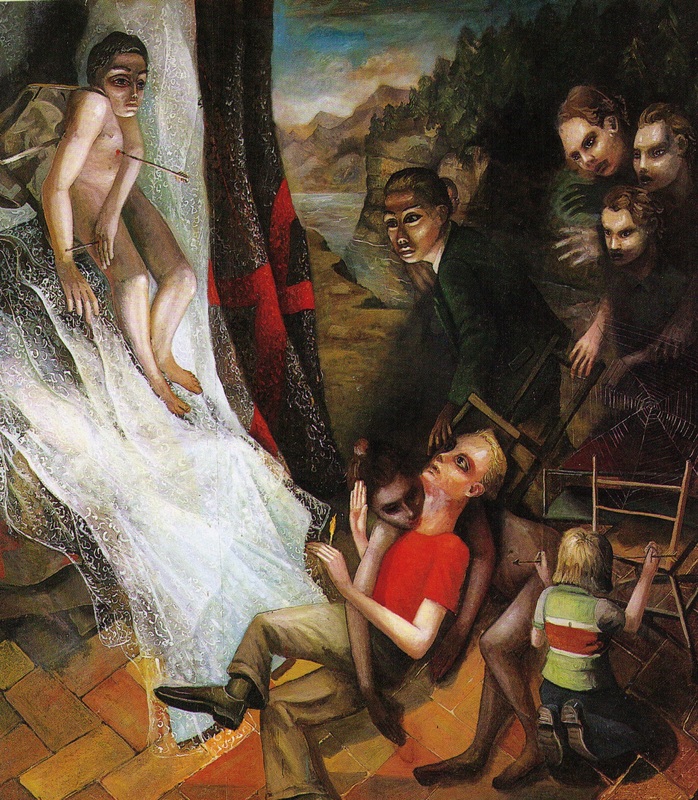
Steven Campbell, A Salty Tale: In a Drought a Man Saves a Whale by his Perspiration and Tears, 1985
I have always been partial to British painters. My earliest influences, as a student in the early 80's, included David Hockney, Francis Bacon, Patrick Proctor and Lucien Freud. Eventually, their influences were replaced by the emerging German and Italian artists in the mid-eighties. You know, the usual suspects, Kiefer, Immendorf, Clemente, Paladino, etc. But then, one day, in the late 1990's, I was shopping for art books and came across The New British Painting.
That's where I first saw Steven Campbell's painting called A Salty Tale: In a Drought a Man Saves a Whale by his Perspiration and Tears, 1985. Everything you need to know about Campbell is right there in that title. The whimsy, the monumental symbolism of the whale, layers of personal and universal meaning. It might as well be called Blood, Sweat and Tears. I was hooked. My own work began to shift.
That's where I first saw Steven Campbell's painting called A Salty Tale: In a Drought a Man Saves a Whale by his Perspiration and Tears, 1985. Everything you need to know about Campbell is right there in that title. The whimsy, the monumental symbolism of the whale, layers of personal and universal meaning. It might as well be called Blood, Sweat and Tears. I was hooked. My own work began to shift.

This is the first large-scale narrative painting I did called From Mud to Miracle. Campbell's influence here is obvious. The absurd dreamlike scenario, odd figures making strange gestures. Like a dream, I'm sure there are layers of "meaning" in there. I'm not particularly interested in de-coding its meaning. I'm more interested in creating psycho-spiritual tableaux where life can unfold in all its multi-dimensional complexity. I've include two more paintings by Steven Campbell that I love as well as a link to other online examples of his work.
Steven Campbell was a Scottish painter who didn't study art until his mid-twenties, after a few years working in a factory. He was part of new wave of figurative artists who emerged in the 1980's that became knowns as The Glasgow Boys. Campbell moved to New York and became something of an Art Star for a while. However, he was unhappy in New York and soon moved back to Scotland where he promptly disappeared from the international scene. A fabulous book on Campbell's paintings by Duncan MacMillan was published in 1993. Unfortunately, Campbell died of a ruptured appendix on 15 August 2007, aged 54. The only known video footage of him that I could find is here on Youtube.
To see more amazing paintings by Steven Campbell, check out this site.
Steven Campbell was a Scottish painter who didn't study art until his mid-twenties, after a few years working in a factory. He was part of new wave of figurative artists who emerged in the 1980's that became knowns as The Glasgow Boys. Campbell moved to New York and became something of an Art Star for a while. However, he was unhappy in New York and soon moved back to Scotland where he promptly disappeared from the international scene. A fabulous book on Campbell's paintings by Duncan MacMillan was published in 1993. Unfortunately, Campbell died of a ruptured appendix on 15 August 2007, aged 54. The only known video footage of him that I could find is here on Youtube.
To see more amazing paintings by Steven Campbell, check out this site.


 RSS Feed
RSS Feed
